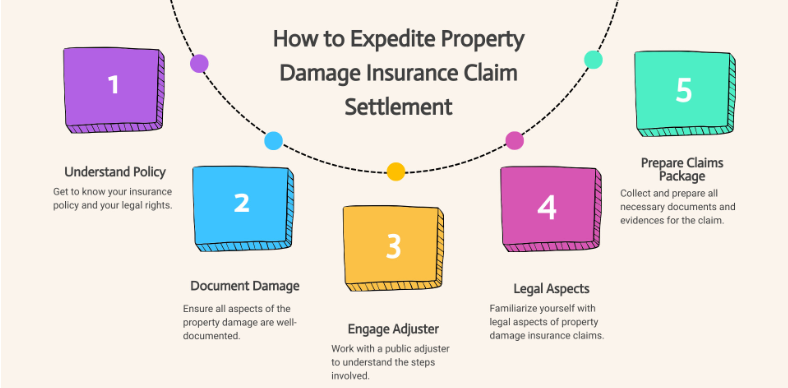How to File a Claim for Property Damage (Step-by-Step Guide)
Whether it’s storm damage, a house fire, vandalism, or a burst pipe, property damage can be stressful and overwhelming. But if you’re insured, filing a claim can help you recover financially and get your life back on track.
To make the process smoother and increase your chances of a successful claim, here’s a step-by-step guide on how to file a property damage insurance claim the right way.
Step 1: Assess the Damage (Safely)
Before doing anything, make sure the area is safe. If the damage was caused by fire, flood, or structural collapse:
-
Wait for emergency services to give the all-clear
-
Avoid electrical hazards or unstable structures
Then:
-
Walk through and note what’s damaged
-
Take photos and videos from multiple angles
Tip: Document before you clean or remove anything.
Step 2: Contact Your Insurance Company
Notify your insurer as soon as possible. Most policies require prompt reporting, and delays could jeopardize your claim.
When calling or filing online:
-
Have your policy number ready
-
Briefly describe what happened and the extent of the damage
-
Ask what documentation is needed
You may be assigned a claims adjuster, who will investigate your claim and determine your payout.
Step 3: Review Your Policy
Understanding what your insurance does (and doesn’t) cover will help you manage expectations.
Check:
-
Covered perils (e.g., fire, theft, wind)
-
Deductibles and coverage limits
-
Special conditions (e.g., exclusions for floods or earthquakes)
-
Time limits for repairs or replacements
Pro Tip: If you have “replacement cost coverage,” you’ll get the value to replace items—not just their depreciated worth.
Step 4: Prevent Further Damage
Most insurers require you to take reasonable steps to prevent additional loss. This may include:
-
Tarping a damaged roof
-
Boarding up broken windows
-
Turning off water or power
Keep receipts for any emergency repairs or supplies—these costs may be reimbursable.
Don’t start permanent repairs until your insurer approves them.
Step 5: Submit a Detailed Claim
Your insurer may give you a claim form or ask you to log into an online portal. Be thorough when filling it out.
Include:
-
Description of what happened
-
A list of damaged or lost items (include model numbers, brands, and purchase dates if possible)
-
Photos/videos
-
Receipts or proof of ownership (if available)
For structural damage, a contractor’s estimate can help back up your claim.
Step 6: Meet with the Claims Adjuster
The adjuster may visit your property to inspect the damage. Be prepared to:
-
Show them the affected areas
-
Provide any documentation or receipts
-
Ask questions about next steps
Tip: You can also get your own independent assessment or work with a public adjuster if you disagree with their evaluation.
Step 7: Review the Settlement Offer
Once the investigation is complete, the insurer will provide a settlement offer.
Review:
-
How much is being paid
-
What’s being covered
-
What your deductible is
-
Whether it’s actual cash value or replacement cost
If anything is unclear or seems unfair, don’t be afraid to negotiate or appeal.
Step 8: Start Repairs and Replacements
Once the claim is approved, you can begin repairs. Depending on your policy:
-
The insurer may pay you directly
-
They may pay your contractor
-
Some payouts may come in installments (e.g., partial payment upfront, balance after work is done)
Important: Keep all receipts and invoices related to the repairs.
Step 9: Keep Records of Everything: How to File a Claim for Property Damage (Step-by-Step Guide)
Throughout the entire process, keep detailed records of:
-
Conversations with your insurance company
-
Emails, letters, and claim forms
-
Receipts and invoices
-
Payments received
These documents can be crucial if disputes arise or if you need to file taxes or apply for government aid.
✅ Final Thoughts on How to File a Claim for Property Damage (Step-by-Step Guide)
Filing a property damage claim can be time-consuming, but being organized and proactive can help you avoid common pitfalls. Here’s a quick recap:
🔹 Take photos and report the damage
🔹 Contact your insurer quickly
🔹 Document everything
🔹 Work with the adjuster
🔹 Review your payout carefully


